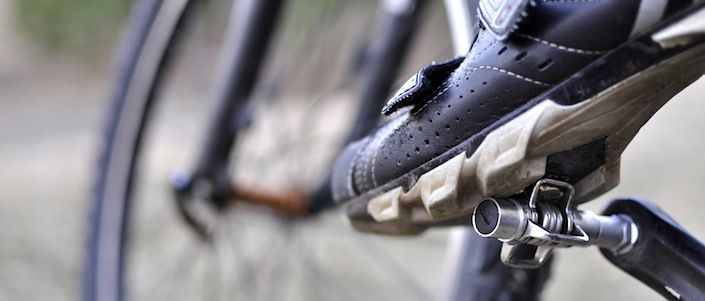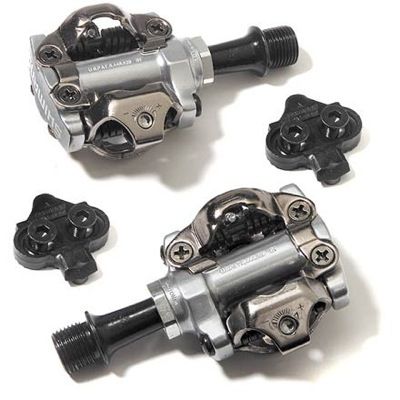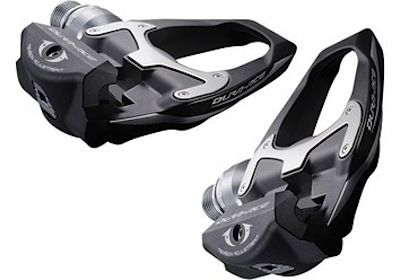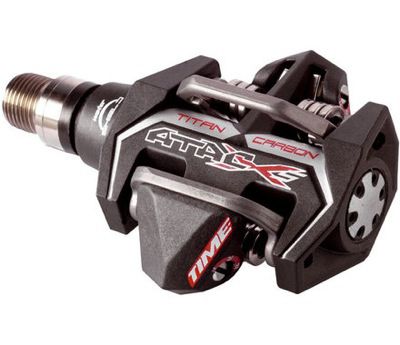
What's the difference between an entry level and top of the range bicycle pedal? Well if you're talking clipless, not a lot really! There is a big jump in the level of quality from your standard metal or plastic flat pedal (obviously), but when you start clipping in, the gains are reduced somewhat as you spend more and more money.
HEADS UP! New to clipless pedals?
Check out "The art of clipping in" for some tips on this essential part of cycling.
Weight
The greatest advantage with a more expensive pedal is probably weight. As you go higher in price, materials and construction techniques become more advanced. The payoff is a reduction in overall weight. As you can see from these pedal comparisons there is quite a difference (up to and over 100 grams) between the cheap and expensive models.
![]() Shimano road & mountain bike pedal comparison
Shimano road & mountain bike pedal comparison
(250g-330g road / 310g-380g mountain)
![]() Look road bike pedal comparison
Look road bike pedal comparison
(240g-354g)
![]() Time mountain bike pedal comparison
Time mountain bike pedal comparison
(279g-372g)
Materials and Construction
As mentioned above, materials change, weight drops and prices rise. With the use of different metals and composites, pedals often become less bulky. You may see, for instance, better mud clearance on a mountain bike pedal by using narrower spindles like between the Shimano PD-M520 and the Shimano M980.
Ironically Shimano is one of the few brands not adopting titanium spindles on their top of the range XTR pedals; instead they have stuck with steel. The thinking is that strength and durability are more important than minimal weight advantages.
The use of carbon fiber is widespread, as is the use of better alloys and generally a refinement of the manufacturing processes and ultimately the finished product.
Bling
Carbon fibre and titanium with shiny alloy is the new bling. Top range pedals have this stuff in spades! Cheaper cromoly axles and composite bodies look like a cheaper option when compared. Is $300 worth it for increased bling factor? I say "YES", but it is good to be honest about the reality of what you purchasing.
Longevity
It would be foolish to assume using high grade materials results in a stronger longer lasting product. There is a reason Shimano stuck with steel...titanium simply doesn't have the same qualities, an important point regarding pedals, which cop so many different forces and general abuse.
Sealed bearings are definitely worth paying more for and it is a good idea to check this before shelling out any money. Sealed units are impervious to water and have a silky smooth feel which lasts.
Generally any half decent pedal will last many years, as long as it isn't smashed into a rock or gutter and is maintained well, particularly after a decently muddy ride.

The Shimano PD-M540 SPD MTB pedal is a perfect blend of performance, toughness and quality. It also won't break the bank.
Conclusion
There are differences between your basic entry level pedals that come stock on a new mountain bike (although not the case with road bikes where pedals are a compulsory add-on), and the top of the line carbon bodied super expensive jobs.
The question is, do these differences shout out while riding? Would the average cyclist notice any difference on a typical Saturday morning ride? I would think no, not really.




